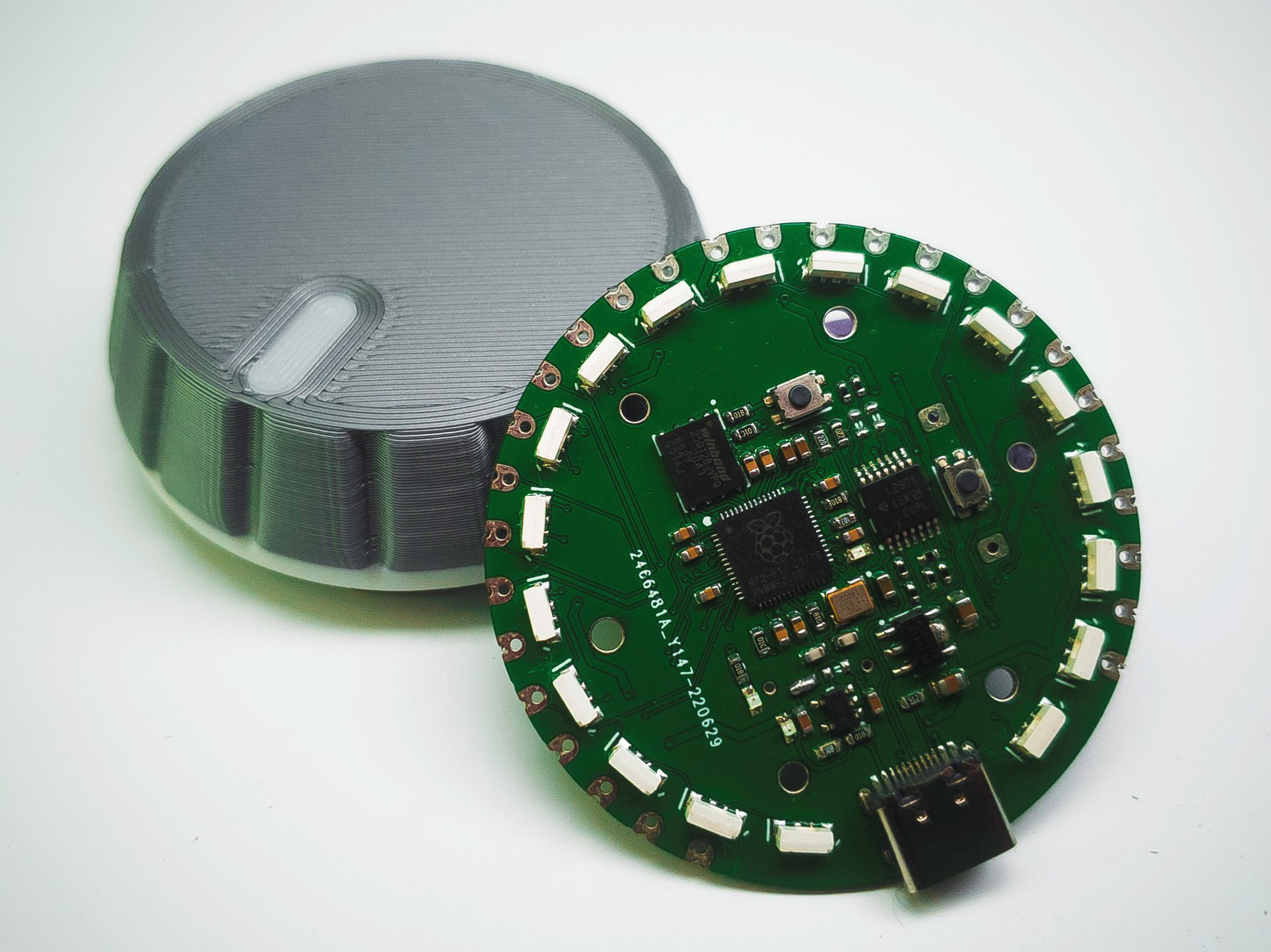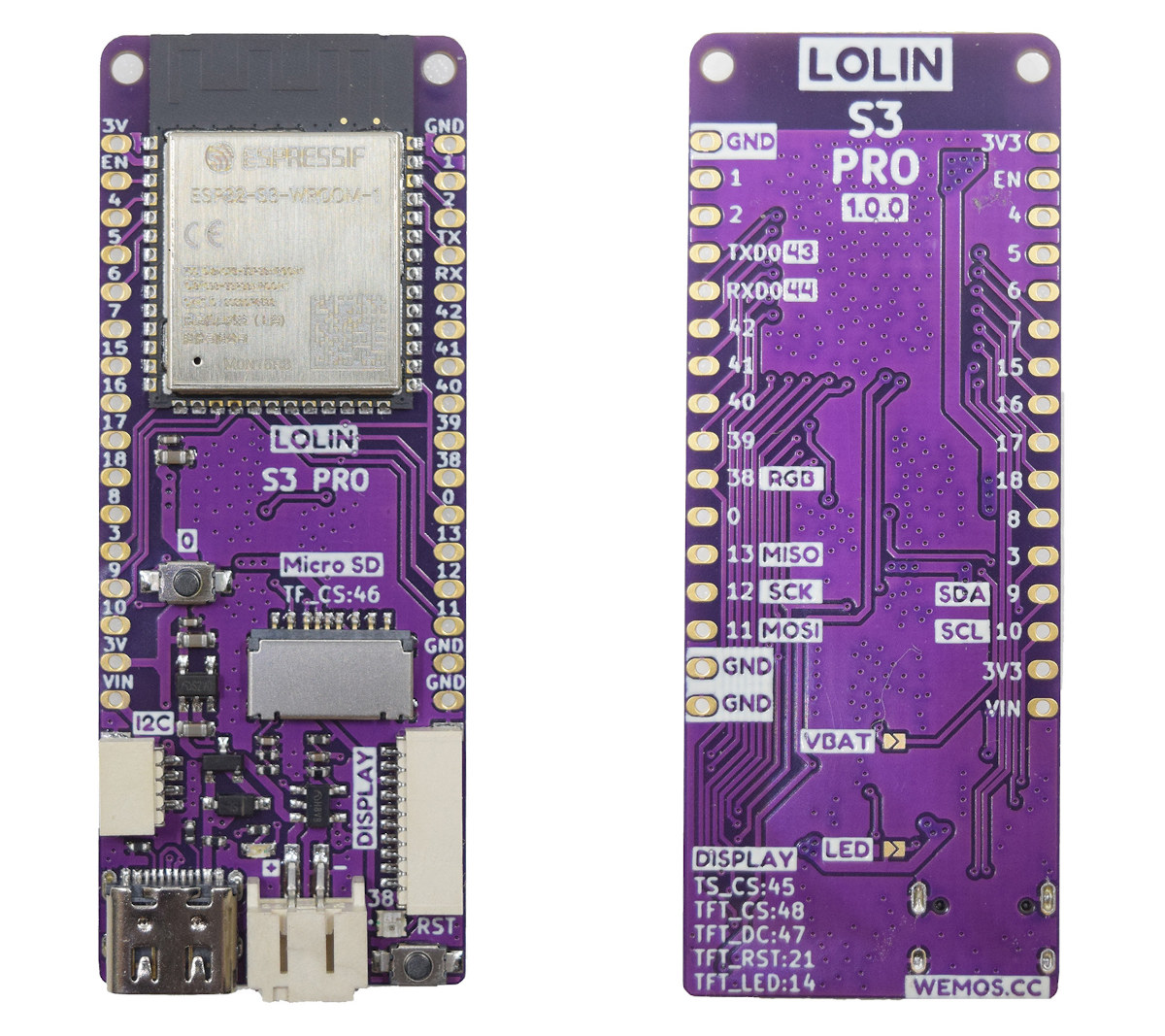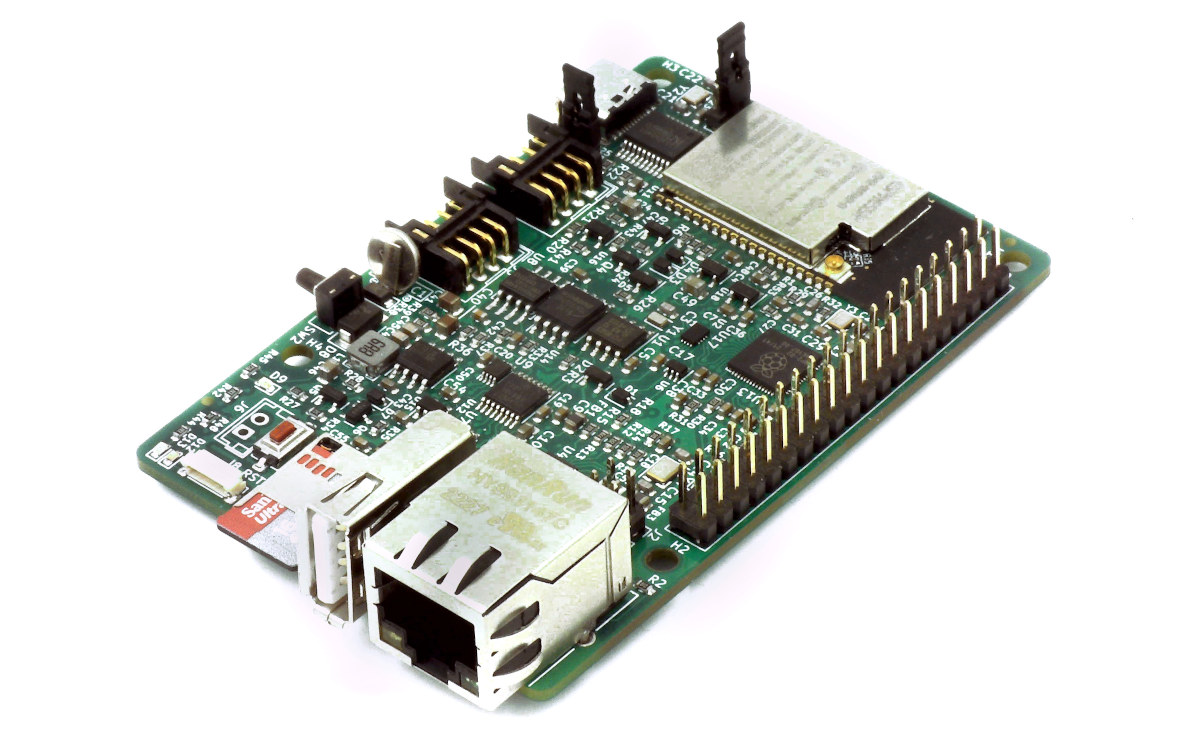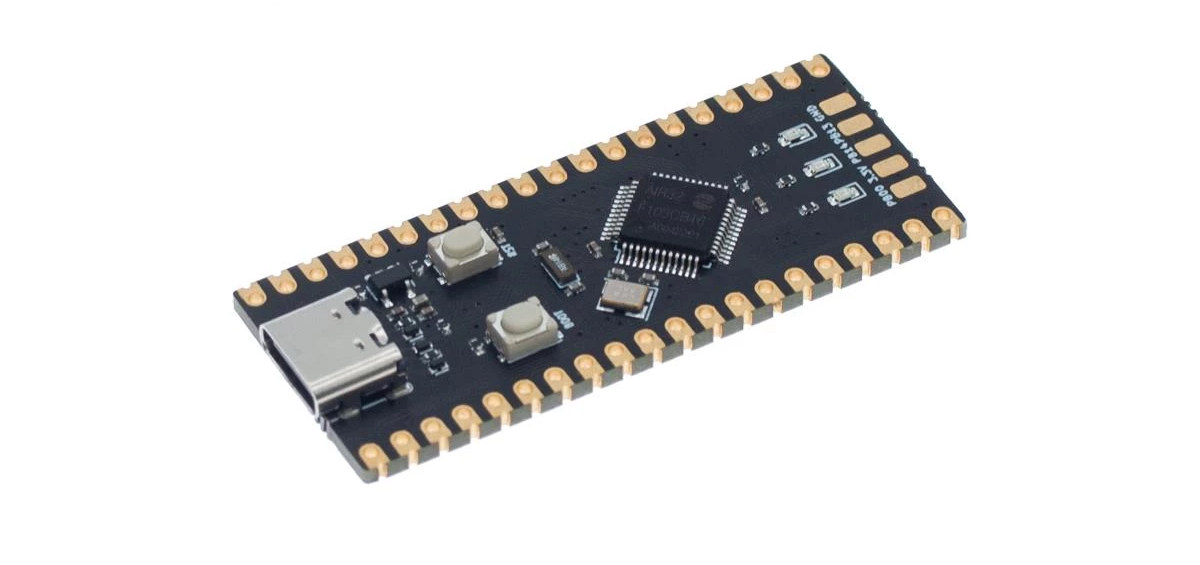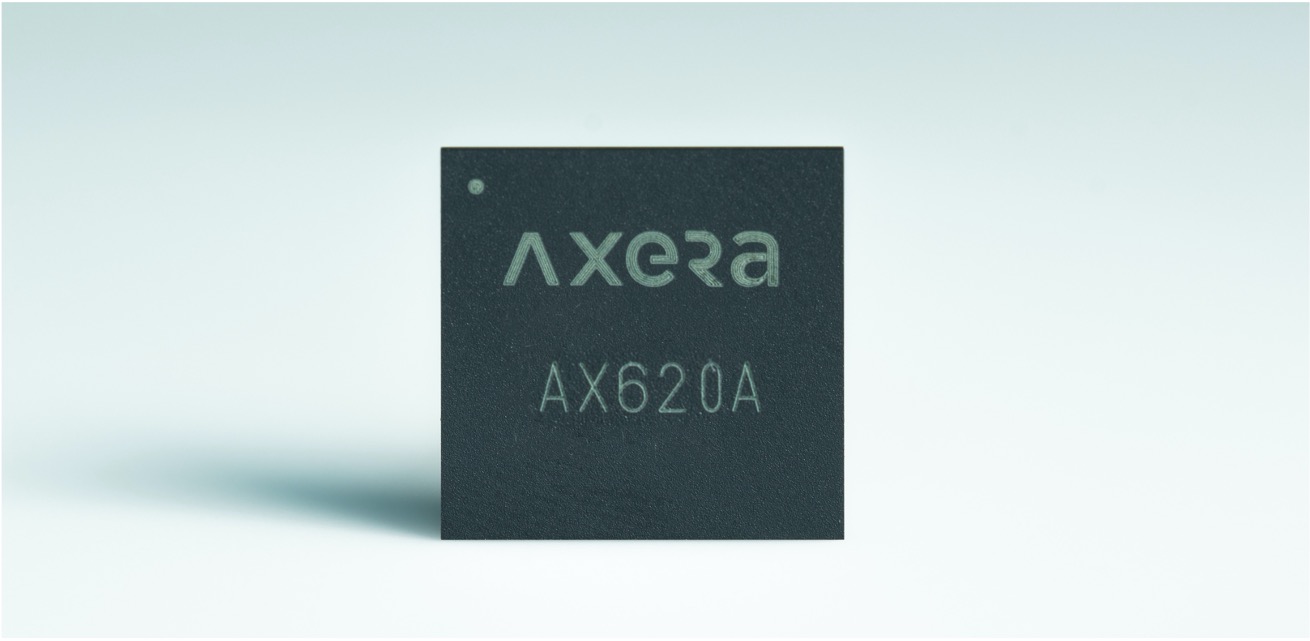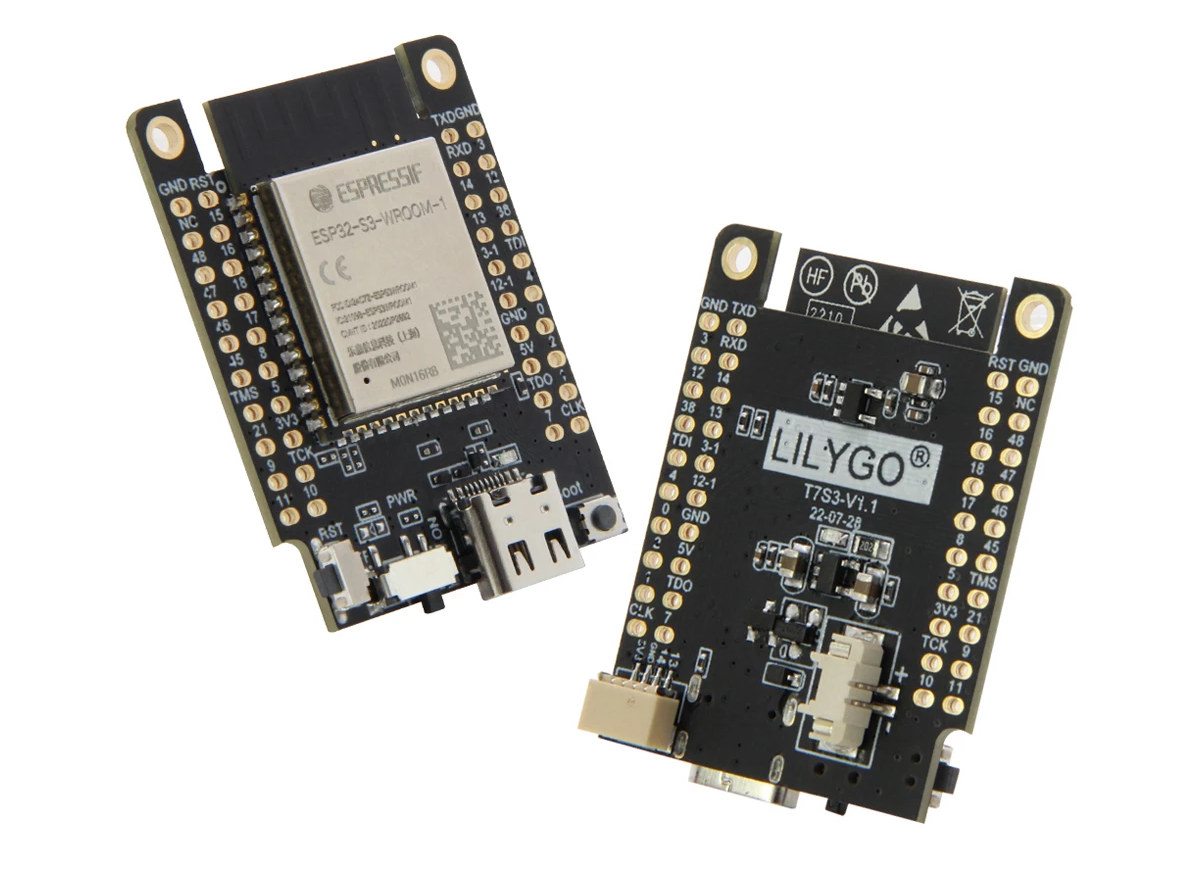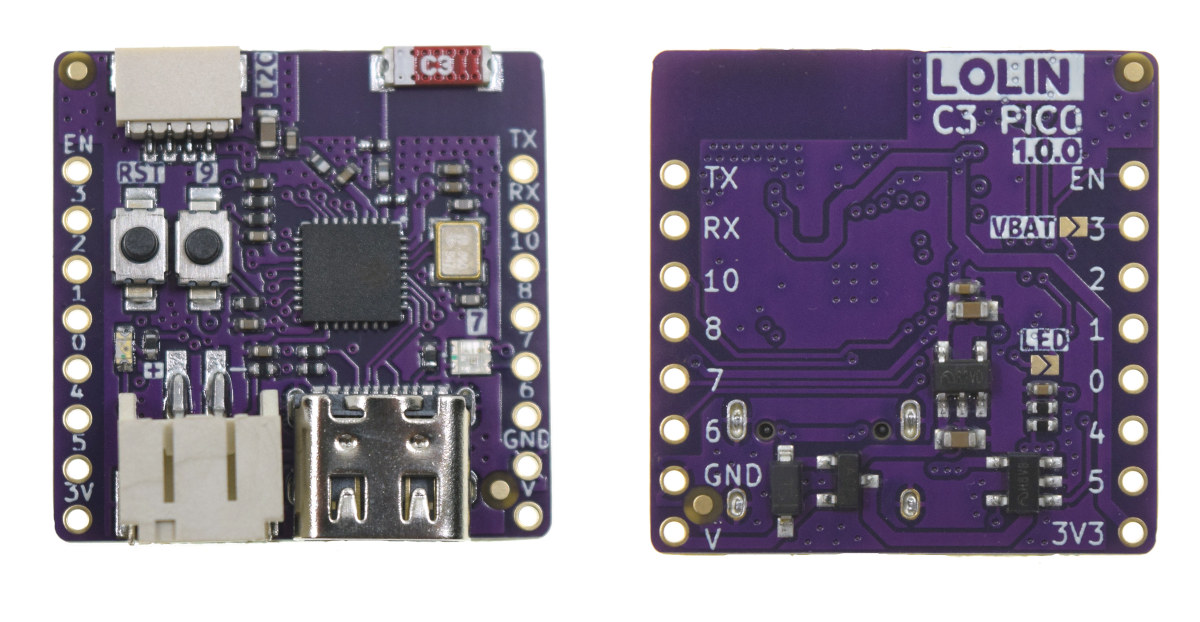PICO DEV M3 is a round-shaped development board based on a Raspberry Pi RP2040 dual-core microcontroller and serves as a magnetic rotary encoder with a few 3D printed parts. Designed by Ahmsville Labs, the board comes with 2MB QSPI flash, various through holes for GPIOs, a USB-C port, and the magnetic rotary encoder supports up to 36,000 steps per revolution and comes with 18 individually addressable LEDs. PICO DEV M3 development board specifications: Microcontroller – Raspberry Pi RP2040 dual-core Arm Cortex-M0+ MCU at 133 MHz with 264kB on-chip SRAM Storage – 2MB QSPI flash USB – 1x USB 1.1 Type-C host/device port Encoder Base resolution of 36 steps, extending up to 36,000 steps per revolution. Ring of 18x individually addressable LEDs Encoder button Ball bearing for a smoother feel compared to traditional rotary encoders Customizable 3D printed encoder Expansion – Through holes placed on the edge of the board for: […]
LOLIN S3 Pro ESP32-S3 board offers display port, MicroSD card slot
LOLIN S3 Pro is a WiFi & Bluetooth LE IoT board built around the ESP32-S3-WROOM-1 modules with various I/Os including a display port, a microSD card slot, and a LOLIN I2C connector. The wireless module ships with 16MB QSPI flash and 8MB PSRAM, and the board also features two 16-pin headers with ADC, DAC, I2C, SPI, UART, etc…, a USB Type-C port, and support for a LiPo batteries with 500mA charging. LOLIN S3 Pro specifications: Wireless module – ESP32-S3-WROOM-1 module with: Espressif Systems ESP32-S3 dual-core Tensilica LX7 @ up to 240 MHz with vector instructions for AI acceleration, 512KB RAM, 2.4 GHz WiFi 4 and Bluetooth 5.0 LE with support for long-range, up to 2Mbps data rate, mesh networking 16MB QSPI flash 8MB PSRAM PCB antenna Storage – MicroSD card socket Display I/F – Display port for “TFT and EPD” displays USB – 1x USB Type-C port Expansion 2x […]
EsPiFF board combines ESP32 module with RP2040 MCU in the Raspberry Pi 4 form factor (Crowdfunding)
The EsPiFF board may look like a Raspberry Pi 4 Linux SBC but it is equipped with an ESP32-WROVER WiFi and Bluetooth module together with a Raspberry Pi RP2040 microcontroller that acts as a co-processor. The goal here is to provide a Raspberry Pi 4 replacement for applications that require higher reliability and even 24/7 operation without necessarily needing the processing power and multimedia capabilities of the Broadcom BCM2711 Arm processor found in the Pi or the versatility of a Linux operating system. EsPiFF board specifications: Wireless module – ESP32-WROVER module with dual-core ESP32-D0WDQ6 microcontroller with 2.4 GHz WiFi 4 and Bluetooth, 8 MB PSRAM and 16 MB flash Co-processor – Raspberry Pi RP2040 dual-core Cortex-M0+ microcontroller @ up to 133 MHz with 16MB flash used to emulate the Raspberry Pi’s GPIOs on the 40-pin header Additional storage 2 KB of fast FRAM for permanent storage of process data. (faster […]
Air32F103 is a clone of STM32F103 clocked at up to 216 MHz
Air32F103 is yet another clone of the STM32F103 microcontroller that can be faster if needed with a clock of up to 216 MHz instead of 72 MHz for the original STMicro STM32 Arm Cortex-M3 microcontroller. The first SKU of the family is the Air32F103CBT6 whose peripherals and hardware design are compatible with equivalent STM32F103CBT6 parts and offered with 32KB RAM and 128KB flash. There’s also a Bluepill-like development board, but with a different pinout, made by LuatOS. Documentation for the board and microcontroller can be found in a Wiki including the MCU datasheet that indicates models with 256KB flash and 64KB SRAM (Air32F103CCT6) and 96KB SRAM (Air32F103RPT6). Since the wiki is in Chinese only, you may want to head over a post in English on Chowdera to learn how to get started with the Keil IDE using code hosted on Gitee. The chip and board were also spotted on EEVBlog […]
AXERA AX620A 4K AI SoC delivers up to 14.4 TOPS for computer vision applications
AXERA AX620A is a high-performance, low-power AI SoC with a quad-core Arm Cortex-A7 processor and a 14.4TOPs @ INT4 or 3.6TOPs @ INT8’s NPU that is slightly inferior to the Amlogic A311D, and mainly used for AI vision applications. With high computing power and built-in image processing capabilities, the AX620A can support a wide range of AI workloads. It also offers low power consumption with low standby power and fast wake-up, so the chip can be integrated into battery-powered products. AXERA AX620A specifications: CPU – Quad-core Arm Cortex-A7 @ 1.0 GHz with 32KB L1 I-cache + 32KB L1 D-cache per core, 256KB L2 cache, FPU and NEON NPU – 14.4 TOPS @ INT4, 3.6 TOPS @ INT8 with support for Imagenet, AlexNet, VGG, ResNet, GoogLeNet, Faster R-CNN, SSD, FPN, Yolo V3, and other neural networks. ISP Proton AI-ISP up to 4Kp30 4 channels of camera support up to 4x 1080p30 Support […]
DongshanPI-D1s – An Allwinner D1s RISC-V development board designed to teach programming
The DongshanPI-D1s development board is comprised of a soldered-on Allwinner D1s RISC-V system-on-module board (SoM) and a carrier board with two 40-pin headers and a 2.0mm dedicated header. This development board is specifically designed to teach programming with a focus on the RISC-V architecture. The development board was designed by 100ask. They previously designed the Dongshan NeZha STU a development board based on the Allwinner D1. The main difference between the two is that 100ask did not include the Ethernet and HDMI interfaces on the DongshanPI-D1s board. The pinout of the headers is also slightly different because they opted to make the headers compatible with the widely used 40-pin GPIO from Raspberry Pi single board computers. DongshanPI-D1s preliminary specifications: D1s Core Lite SoC – Allwinner D1s single-core XuanTie C906 64-bit RISC-V processor @ 1.0 GHz with with 32 KB I-cache + 32 KB D-cache Memory – 64 MB DDR2 (SIP) […]
LILYGO T7-S3 ESP32-S3 board with 16MB flash, 8MB PSRAM, LiPo battery support sells for under $10 (Promo)
LILYGO has launched another ESP32-S3 development board. The T7-S3 is equipped with an ESP32-S3-WROOM-1 module with 16MB flash, 8MB PSRAM, and a PCB antenna. The board is fairly compact at 3.9×3.1 cm, can be powered through a USB-C port or a LiPo battery with charging support, and offers 40 through holes plus a Qwicc/QT I2C connector for expansion. LILYGO T7-S3 specifications: Wireless module – ESP32-S3-WROOM-1-N16R8 module with SoC – Espressif Systems ESP32-S3 dual-core Xtensa LX7 processor @ up to 240 MHz integrating vector instructions for AI acceleration, 512 KB SRAM, WiFi 4 and Bluetooth 5.0 LE & Mesh connectivity Memory – 8MB PSRAM Storage – 16MB SPI Flash USB – USB Type-C port Expansion 2x 20-pin headers with up to 29x GPIOs, 20x ADC, UART, SPI, Touch interface, 5V, 3.3V, and GND 4-pin Qwiic/QT I2C connector Misc – User LED, charging LED (blue), reset and boot buttons, power on/off switch […]
LOLIN C3 Pico is a tiny ESP32-C3 board with battery charging support
LOLIN C3 Pico is a tiny (25.4×25.4mm) ESP32-C3 RISC-V board with 2.4 GHz WiFi and Bluetooth Low Energy connectivity, a few I/Os, and LiPo battery support including charging circuitry. I tend to like Wemos/LOLIN boards, because of their small form factor, support for equally tiny shields, and low price. The LOLIN C3 Pico is no exception, and even adds a few features such as an RGB LED, an I2C connector, and support for battery power and charging. LOLIN C3 Pico specifications: SoC – Espressif Systems ESP32-C3FH4 single-core 32-bit RISC-V (RV32IMC) microcontroller up to 160 MHz with 400 KB SRAM, 4MB Flash Connectivity – 2.4 GHz WiFi 4 and Bluetooth 5.0 LE (in SoC) Expansion headers 2x 8-pin headers with up to 12x GPIO, ADC, I2C, SPI, UART (3.3V I/O voltage) LOLIN I2C port USB – 1x Type-C USB for 5V power and programming Misc – Reset button and user button, […]


